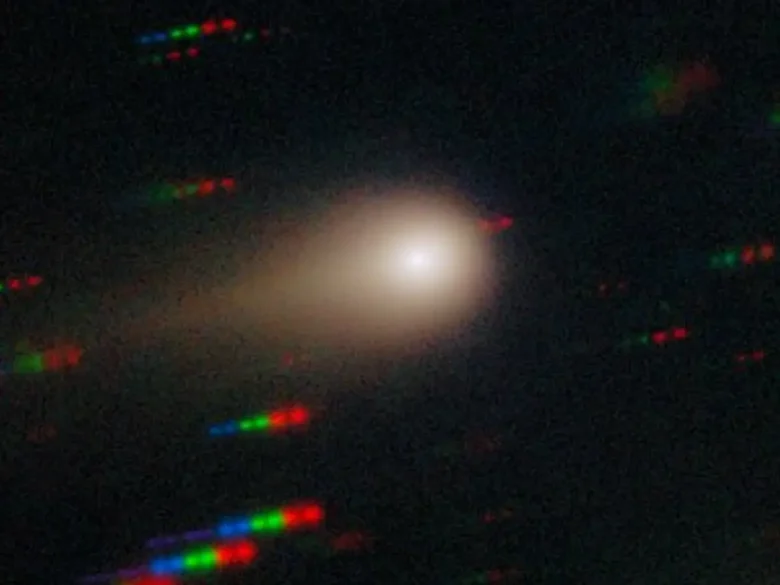| Summary |
|
Comet 3I/ATLAS will reach its closest point to the Sun on Wednesday, October 29, 2025, giving astronomers a rare look at a visitor from outside our solar system. The object was discovered in July by the ATLAS survey telescope in Chile and is now under close study because it may carry material from another star system.
| Detail | Information |
|---|---|
| Name | Comet 3I/ATLAS |
| Type | Interstellar comet |
| Discovered On | July 1, 2025 |
| Discovered By | ATLAS Telescope, Chile |
| Closest Approach to Sun (Perihelion) | October 29, 2025 |
| Distance at Perihelion | 0.25 AU (closer than Mercury) |
| Estimated Size | About 10 km across |
| Current Brightness (October 29, 2025) | Magnitude 12–14 |
| Constellation Location | Virgo (evening sky) |
| Will It Return? | Not for thousands of years |
Scientists first saw the comet on July 1. ATLAS normally watches for space rocks that might come near Earth, but this one stood out. Its path is not an orbit. It moves through space on a straight route, which shows that it came from far beyond our Sun.
3I/ATLAS is the third known interstellar object after ‘Oumuamua in 2017 and Comet Borisov in 2019. Unlike ‘Oumuamua, which looked like a rocky fragment, this comet is made of ice and dust and is about 10 kilometers wide. Its size and speed make it one of the most interesting objects to cross our region of space in recent years.
At perihelion today, the comet sits about 0.25 astronomical units from the Sun. That is closer than Mercury. The heat is forcing gas and dust out of its surface and forming a bright cloud around the comet. Researchers say this activity could increase over the next several days.
Space agencies are watching. ESA reported that cameras on the Mars Express and ExoMars probes recorded bursts of material coming from the comet’s surface. NASA’s Hubble Telescope captured a green glow around it last week, produced by carbon compounds boiling off in sunlight.
For skywatchers, seeing the comet will not be easy yet. Its brightness is between magnitude 12 and 14, far too dim for the naked eye. Observers will need a telescope with at least an 8-inch mirror and dark skies. It appears low in the evening sky in the direction of Virgo.
The comet may brighten as it moves away from the Sun, potentially reaching magnitude 10 by mid-November. That would make it faintly visible in binoculars under ideal conditions, though still challenging for most people.
Scientists want to learn what the comet is made of. Interstellar comets may contain ice and organic matter from the system they came from. Testing that material could reveal how planets form around other stars. It may also help researchers improve systems that warn of dangerous objects headed toward Earth.
Online rumors claim the comet will pass behind the Sun or rival the Moon in brightness. Astronomers say neither is true. The comet remains visible to ground instruments, and its brightness will stay far below moonlight levels. Even so, its tails may stretch for millions of kilometers, making it a striking object through a large telescope.
3I/ATLAS will continue moving outward after today and should fade from sight by early 2026. It will not return for thousands of years. Some researchers hope a future probe could collect dust from its tail, but no mission has been approved.
For now, scientists will track every change they can. Interstellar visitors are rare, and each one helps researchers learn more about the wider galaxy. Clear skies to anyone giving it a try tonight.

